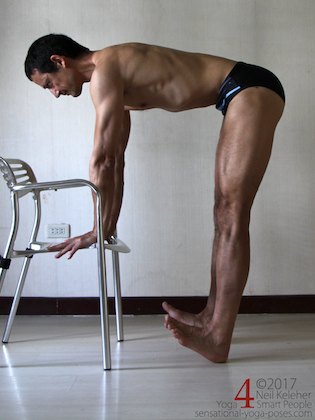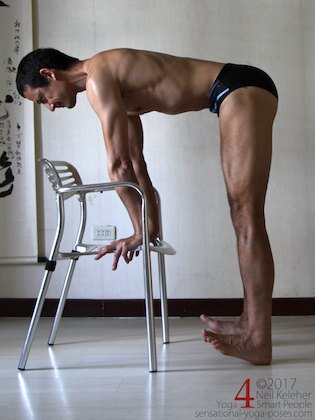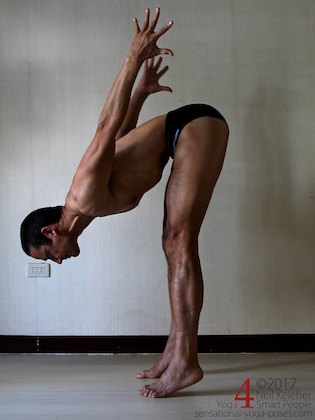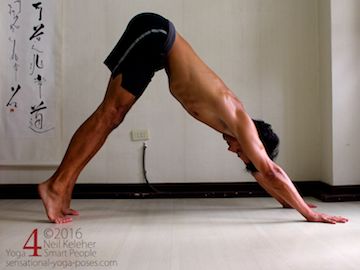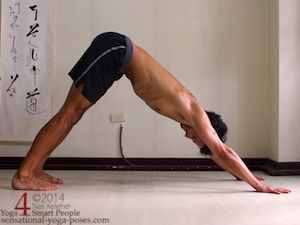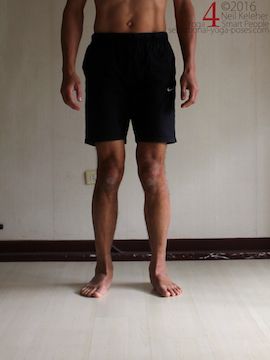I Love Stretching, But I Teach Muscle Control
Active stretching is a type of muscle control.
An advantage of muscle control is that it isn't reliant (not completely anyway) on a position or particular stretch.
And ironically (or perhaps tellingly) if you've got something like tight ankles, it could mean that you've got muscles that can't activate when they need to.
Muscle tightness may be to protect joints
Why might achilles tendon tightness be a symptom of inactive or non-functional muscles?
One reason is to protect a joint or joints.
If you assume that ligaments aren't passive but active, i.e. affected by muscle activation, then that can lead to the idea that muscle tension can then affect joint capsule tension (since ligaments tend to attach to joint capsules.)
Why is this important?
If you can add tension to a joint capsule (or control tension) that means you can control joint capsule fluid pressure.
Say bones are being squeezed together at a joint. That could be from the weight of the body. It could be from muscle activating on opposing sides of the joint. In either case, muscle activation can add tension to the joint capsule. This pressurized joint fluid so that it resist articulating surfaces from pressing against each other. Why might you want this?
If a joint has space between the bones that it connects, those bones can adjust relative to each other. That in turn means that muscles on either side of the joint (as well as tendons and ligaments on either side of the joint) can distribute and share tension evenly, in the same way that the ends of the same rope on either side of a pulley can share tension.
So what has this to do with a tight achilles tendon?
Muscle inactivity can affect joint capsule tension and lubrication
To maintain "necessary" joint capsule tension, different muscles are going to have to come into play. If one muscle can't play, that means joint capsule control is potentially limited. That in turn means that tension can't be shared. What that means is that a muscle or a tendon or a ligament can become overworked. Or, more critically, parts of a joint capsule can become overworked.
Over time this could cause a joint capsule to rupture.
Then you have no control since lubricating fluid is no longer contained.
Your brain may use muscle tightness or pain to prevent this from happening.
Joints are critical structures
Now, do you think joints are critical structures or non critical?
If you've ever watched any war movies, a key way to hamper the enemy is to cut of supply lines. And one way to do that easily is to blow up a bridge.
Bridges are hard to replace (especially if they are over a deep gorge or river.
We tend not to think of joints as critical structures until we need one replaced or can't use it for some particular reason.
Now imagine you're god, or nature, or you have the experience of eons of evolution. Do you think you'd program the brain to look after joints (since they are critical structures) or not?
(This assumes that the brain controls our muscles. If it isn't, then substitute in for brain whatever it is that controls our muscles.)
A lack of flexibility could mean you are lacking some crucial element of muscle control
A lack of flexibility, for example: tight ankles or a tight achilles tendon, may not mean that you need to stretch. Instead it could mean that you need to learn to activate a particular muscle or set of muscles.
Hence, active stretching.
If you've had an injury (or simply never learned how to use your body effectively, or picked up bad habits from your parents or other people you are close to) you simply may need to tell your brain that a particular muscle is available for use.
Note that this isn't to say that stretching isn't bad or that you shouldn't do it.
However, in cases of pain or poor function, it may be a good idea to look at muscle function first, or at least include some sort of muscle control in your training regime. Or, learn how to use your muscles while stretching.
Suggestions for dealing with a painful achilles?
Rather than just stretching the ankle, look at using the muscles that work on it. Use the ankle flexors to stretch the extensors. Use the extensors to stretch the flexors.
The nice thing about using muscles to stretch other muscles is that you can actually feel the muscles activating. You can also feel the stretch.
Active toe stretching
There are muscles that work on the toes that cross the ankle joint. And so working on your toes can be an important part of dealing with achilles tendon pain, since activating the toes will affect the ankles.
Sitting in staff pose (sit upright with legs straight out in front… lean against a wall if this is difficult), start by wiggling your toes.
Feel your feet as you do so.
You can even focus on feeling your shins.
Bend toes forwards and backwards.
As a start you can then practice bending your toes forwards. Relax and repeat. Then bend them backwards. Here again, relax and repeat.
During the active phase of these toe stretches, notice the muscle activation sensations that occur in your feet, ankles and even along the fronts, sides and back of your shins.
Active ankle stretches
Next, work on your ankles.
Turn your feet inwards
Turn your feet inwards, pause, and then relax and repeat.
Here again notice the sensations that occur in your feet, ankles and lower legs.
You may even notice sensations around the knees for some of these active ankle stretches.

Staff pose with feet turned inwards
Turn your feet outwards
Here, turn your feet outwards. Keep your knees pointing up as you do so. Pull the outer edges of your feet back and press forwards through the inner edge. Relax and repeat, again noticing the sensations in your feet, ankles, shins (and knees) during the active phase.
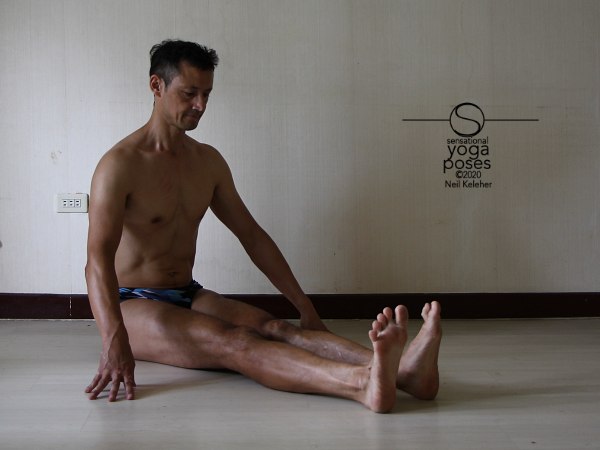
Staff pose with feet turned outwards
Bend your feet forwards
Next, bend your feet forwards. Notice your heels pulling back. Notice the stretch along the front of your foot and ankle. (For an additional stretch, try also bending your toes forwards!). Relax and repeat.
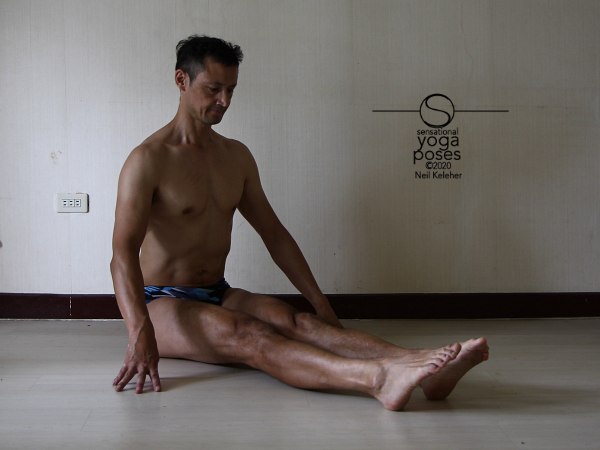
Staff pose with feet bent forwards
Bend your feet backwards
Next, bend your feet backwards. This is where you may notice your knees activating. But again, notice the sensations in your feet, ankles and shins. You may also feel like you are pushing forwards through your heels.
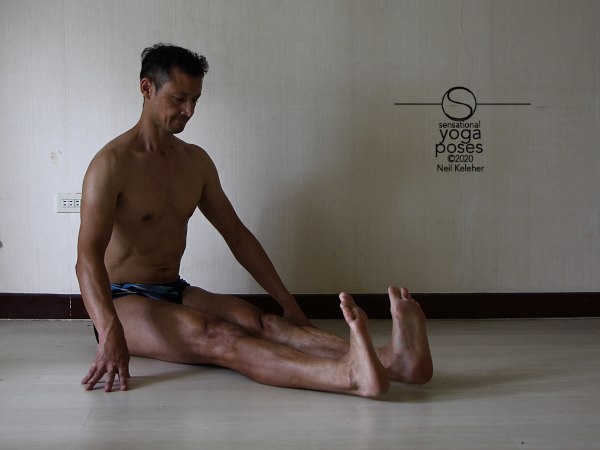
Staff pose with feet bent back
Activating or Stiffening heels and forefeet
One thing I'll often do in my classes is have my students focus on feeling their forefeet and heels while doing these exercises, particularly when turning the feet in and out.
Something you could then try doing is stiffening your forefeet and heels in any of the above foot stretching positions and even with the foot "neutral".
You should find that the tendons at the front and back of your ankles stiffen, particularly when you stiffen your heels.
(You should also notice muscle activation along the sides and even the backs of the shins).
Active ankle stretching while bending forwards
You can try repeating these active toe and ankle stretches while bending forwards.
I'd suggest making your spine long as a first step.
And you could also simply try stiffening your forefeet and heels with feet neutral. You may find it helps your forward bend.
Adjusting your ankle control efforts
As you get used to doing the above active ankle stretches, you can then work at adjusting so that both feet feel even.
Bending your feet forwards and backwards you can adjust for feel by slightly turning one foot outwards or inwards. Focus on one foot at a time and repeat if necessary.
Turning your feet outwards or inwards you can adjust by slightly bending one foot forwards or backwards. Again, focus on one foot at a time and repeat if necessary.
Note, you probably won't get both fet feeling the same. Nonetheless, try to adjust without forcing.
If you've ever had to tune in to a radio station then this is the same idea.
"Adjust" means making small and slight movements. It also means moving slowly and smoothly.
The first goal of adjusting is to get feel
As you practice the above toe and ankle active stretches, the first goal of adjusting can be to generate sensation. Once you have sensation you can then fine tune so that the sensations in both feet match.
Standing Foot and Ankle Exercises
You can do similiar exercises while standing.
Standing active toe exercises and stretches
To start with you can try lifting your toes. Relax and repeat. Then, try pressing your toes down into the floor. Relax and repeat.
You can then try the same thing while doing a standing forward bend.
Standing active ankle stretches
Standing upright, you can focus on one foot at a time and bend the foot upwards.
Alternatively, you can shift your weight back onto your heels and try bending both ankles upwards. Maybe place a hand on a wall so that you can focus on the active ankle stretch instead of worrying about balance.
As a compliment, lift your heels.
Work at maximum lift with your knees straight.
Standing forward bend with active ankle stretches
You can repeat the above active ankle stretches while doing a standing forward bend.
If you can't touch your hands to the floor, place your hands on yoga blocks or the seat of a sturdy chair.
If you do have your hands supported, you can try shifting your weight forwards when lifting your forefeet. Your arms will have to do some work.
That being said, even if your weight is back, over your heels, you can still actively stretch your achilles by focusing on lifting your forefeet as high as possible.
Note that heel lifting action can be just as important as lifting the forefoot, if for nothing else, muscular balance.
Actively stretching the achilles in downward dog
You can also try the same actions in downward dog pose.
First do downward dog with the heels lifted maximally. Then, do the opposite. And rather than focusing on pressing your heels down, focus instead on lifting your forefeet up.
Adjusting your feet while standing
While standing it's a bit more difficult to adjust your feet because your feet are on the floor.
An important point to note is that while standing, your shins can rotate relative to your feet.
If you rotate your shins outwards, your instep will tend to lift. Rotating your shins inwards, your insteps will tend to collapse or move closer to the floor.
And so when standing, one simple exercise that you can also add is to practice shin rotations.
Practice stiffening your feet
Something else you can also practice is stiffening the feet. (In particular, focus on your heels. Check out shin rotations and heel stability for more on this.) I'd suggest trying this in any of the active stretching positions. Also play with it with your feet neutral. You can also play with it with your shins rotated fully outwards or inwards.
Published: 2020 08 05
Updated: 2023 03 23
